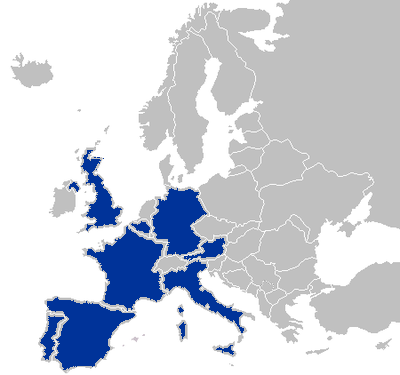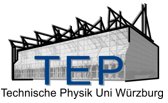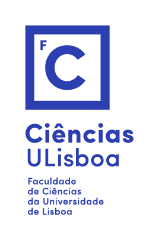-Beneficiaries
 The 10 Beneficiaries of TeraApps are some of the top Universities and Academic Institutes in Europe. Creating a European network that connects ESRs and Professors from 8 different countries, including: Austria, Belgium, France, Germany, Italy, Portugal, U.K. and Spain.
The 10 Beneficiaries of TeraApps are some of the top Universities and Academic Institutes in Europe. Creating a European network that connects ESRs and Professors from 8 different countries, including: Austria, Belgium, France, Germany, Italy, Portugal, U.K. and Spain.
University of Glasgow
![]()
University of Glasgow
Founded in 1451, the University of Glasgow is the fourth oldest university in the English-speaking world. It is the Scottish University of the Year (The Times and The Sunday Times Good University Guide) 2018 and a member of Universitas 21, the international network of research universities and the Russell Group.
Julius-Maximilians Universität Würzburg
 Julius-Maximilians Universität Würzburg
Julius-Maximilians Universität Würzburg
The chair of Technische Physik, Department of Physics and Astronomy, University of Würzburg, is a technology center for advanced lithography and processing for nanoelectronic and nanophotonic materials and devices. The group has around 40 staff members including students and utilizes the Gottfried Landwehr Laboratory for Nanotechnology, a 550 m2 cleanroom facility, for the development of novel nanomaterials, nanofabrication technologies and their application to new devices. In addition to several molecular beam epitaxy systems for quantum well and quantum dot heterostructure growths in different material systems, the clean room is equipped with two high resolution electron beam lithography systems, high resolution electron microscopes, different dry etching systems, metallization systems etc.
The group has participated and is currently participating in a variety of EU projects as project partner, work package leader and project coordinator (e.g. Q-SWITCH, NEAR, ULTRABRIGHT, NANO-TCAD, BIGBAND, NODE, SUBTLE, QUANTIP, NANOPOWER, LANDAUER) with the major emphasis on nanostructure device research for future emerging technologies, classical and quantum computation and quantum communication.
Universität Duisburg-Essen
 Universität Duisburg-Essen
Universität Duisburg-Essen
The University of Duisburg-Essen (UDE) is one of the major German universities and is firmly based in the lively Ruhrgebiet metropolitan area. UDE takes responsibility in research, teaching, and management within its social environment. The UDE is committed to international standards to fulfil its educational mission. In research, UDE supports interdisciplinary focus areas such as nanoscience. We create optimal study and working conditions to offer academic and research-based teaching.
At UDE the Department of Electrical and Information Engineering (within the Faculty of Engineering) is involved in TeraApps with two groups: the lab of General and Theoretical Engineering and the lab of High Frequency Electronic Devices.
General and Theoretical Engineering: This group maintains a well-equipped simulation environment for EM and multi-physics modelling encompassing various state of the art FDTD, FEM, MoM, GTD, and circuit simulation platforms. It operates a small microwave lab that contains an anechoic chamber for (far field) antenna characterization together with a RF near field scanner, a robotized chip antenna measurement setup, and microwave measurement equipment to cover operation frequencies up to 320 GHz.
High Frequency Electronic Devices: At the Center for Semiconductor Technology and Optoelectronics the group operates a complete III/V semiconductor processing line in a state-of-the-art cleanroom laboratory. Under constant climatic conditions, semiconductor layers, ultra-high frequency semiconductor devices and circuits are fabricated down to the nanostructure scale and researched up to THz frequencies.
The UDE groups are currently involved in various research projects in the simulation, design, fabrication and measurement in the realm of future applications at THz frequencies. They are both active members of Center for Nanointegration Duisburg-Essen (CENIDE).
Ciências - Universidade de Lisboa
 Ciências - Universidade de Lisboa
Ciências - Universidade de Lisboa
The Faculdade de Ciências da Universidade de Lisboa (FCUL), Faculty of Sciences, is one of the University of Lisbon's 18 schools, offering several levels of education (BSc, MSc and PhD) in a wide variety of themes in the following scientific and technological domains (covering mathematics, physics, chemistry, computer engineering, energy, environment, life sciences, Earth sciences, and the history and philosophy of sciences and technology), where about 450 academic staff and researchers and 5 500 students find a stimulating environment to interact, opening up new paths and new visions. The CENTRA-SIM is a research unit operating in the highly international environment with activities which include instrument building, data analysis and processing and scientific exploitation, with expertise in physics of electronic and optoelectronic devices and low-dimensional semiconductor structures, superconducting detectors, optical/near-infrared cryogenic instrumentation development, image and data processing and galactic astrophysics. FCiências.ID – Associação para a Investigação e Desenvolvimento de Ciências (FC.ID), is a Non-Profit Private Association, endowed with legal personality, created as a common initiative of FCUL and six private companies, in order to support, potentiate and develop research and development (R&D) and innovation activities. FCiências.ID hosts the researchers and has all the capacities to carry out the proposed work.
National Physical Laboratory
 National Physical Laboratory
National Physical Laboratory
The National Physical Laboratory (NPL) is UK’s National Measurement Institute, and one of three leading NMIs in the world. It is a Public Corporation and a research establishment whose primary focus is on measurement and metrology. NPL’s remit is twofold: to provide scientific and technological underpinning for fundamental physical measurements; and to provide measurement services and metrology-related research to industrial clients, and to serve the needs of industry in developing novel instrumentation and techniques. NPL, as a research establishment, has a long history of participation in postgraduate training, and currently hosts over 180 postgraduate students.
Universitat Autònoma de Barcelona
 Universitat Autònoma de Barcelona
Universitat Autònoma de Barcelona
The Universitat Autònoma de Barcelona (UAB) is one of the major public universities of Spain. It is in Bellaterra, 20 Km from Barcelona city. The University has over 41,000 students, almost 4,600 researchers and teaching staff, and it hosts more than 6,000 foreign students. Currently, the University offers 81 bachelor’s degrees, 143 official Master’s degrees, as well as 8 Erasmus Mundus Master's degrees, and more than 700 PhD dissertations have been elaborated within its doctoral programs.
The UAB is recognized internationally for its quality and innovation in research. It coordinates a potent scientific and technological centre (the Esfera UAB -UAB Sphere), which includes all departments, science and technology services, research centres, institutes. Its main areas of investigation include Environmental Sciences and Technology, Nanotechnology, Microelectronics, Material Science and Engineering, Computer Vision, Artificial Intelligence and Experimental Sciences (44 patents claimed and 53 spin-off companies and new 9 companies, including 7 spin-offs).
Université de Montpellier
 Université de Montpellier
Université de Montpellier
IES Institute of Electronics and Systems is a joint research laboratory of the University of Montpellier and CNRS that has manpower of 200 members and manages four technological platforms.
Thanks to its experience and know-how in developing components and systems for electronics, micro-electronics, photonics, electric power, heat and acoustic applications, the IES is able to provide scientific and technological tools contributing to the solving of major current societal issues as energy, water, food, health, urban planning, defence, security, climate change, pollution etc.
To reach these objectives, three research departments develop new components and systems optimized in term of:
- Integration (miniaturization, nanotechnologies, power device integration)
- Efficiency (sources and detectors in the infrared and THz spectra, low noise components)
- Communication (pass-band increase, THz, RFID, air communications)
- Vectorisation (drones, pico-satellites, hydraulic probes)
- Autonomous power supplies (energy efficiency, micro-power supplies)
- Reliability (electronic components and materials under high electrical, thermal and radiation stress in space, and at ground level).
Technische Universität Wien
 Technische Universität Wien
Technische Universität Wien
The Institute of Electrodynamics, Microwave and Circuit Engineering (EMCE) at Vienna University of Technology consists of five workgroups, specialising in magnetic materials, bio-electronics, integrated circuits, microwave and THz electronics.
The focus of the THz-Electronics Group (established in 2016) is on research and development of efficient THz sources, detectors and systems with special emphasis on resonant tunnelling diodes (RTDs), THz and sub-THz oscillators, THz photomixers and photomixing systems. The group is also concerned with applications in the THz frequency range. The activities of the groups are ranging from fundamental theoretical studies of physics of semiconductor devices (fast electron transport, tunnel phenomena, plasmonics, etc.) to design of devices and systems, their fabrication (sub-micrometer semiconductor technology), THz measurements and realization of THz systems for practical applications.
Consiglio Nazionale delle Ricerche
 Consiglio Nazionale delle Ricerche
Consiglio Nazionale delle Ricerche
The CNR-NANO research activities will be developed within the National Enterprise for Nanoscience and Nanotechnology NEST at the Scuola Normale Superiore, the leading Italian higher education institute for physics and exact sciences. NEST is a research and training centre where physicists, chemists and biologists investigate scientific issues at the nanoscale. This knowledge is exploited to develop innovative nano-biotechnological tools, nanoelectronic and photonic devices and architectures.
With a total staff of 120 people NEST activities address a rather broad range of research activities that span from semiconductor/superconductor nanostructure design, photonics, growth and experimental investigation to single-molecule studies in live cells and tissues, with a unique close cultural integration of its multidisciplinary teams which is characteristic of nanoscience.
CNR-NANO highlights include: internationally leading contributions in the development of the first Terahertz quantum cascade lasers, patented and industrially-licensed, development and implementation of the first nanowire and graphene THz room- temperature nanodetectors and spin rectifiers, the development of THz waveguides and a wealth of seminal contributions in the field of tunable, ultra-narrow, aperiodic and random THz QC lasers.
Keysight Technologies Belgium
 Keysight Technologies Belgium
Keysight Technologies Belgium
Keysight Technologies Inc. (NYSE: KEYS) is the world's leading electronic test and measurement company, transforming today's measurement experience through innovation in wireless, modular, and software solutions. With its HP and Agilent legacy, Keysight delivers solutions in wireless Communications, Aerospace and Defense, and Semiconductor markets with world-class platforms, software, and consistent measurement science. The company's 12,600 employees serve customers in more than 100 countries. Keysight holds the #1 position in its industry segments of: Communications, Aerospace and Defense, Computers, and Semiconductors. The company had a FY18 revenue of $3.2billion.

